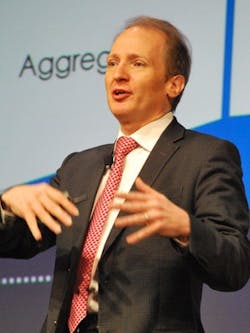Connectivity and interoperability in real time
Attendees of the Minds + Machines 2015 conference this morning were treated to a host of examples that captured the imagination and illustrated the breadth and depth of what connectivity can accomplish for municipalities, businesses, consumers and citizens. From cities marshaling resources and improving traffic flow to retailers synching their customers’ digital and physical lives, the potential of the Internet of Things was on full display at the morning session, “Intelligent Environments: Building Tomorrow’s Intelligent Connected World."
Here are the highlights.
Just what is this Internet of Things?
Jonathan Woetzel, a director at McKinsey and the McKinsey Global Institute, laid out the 10,000-foot view of the projected $4 trillion to $11 trillion Internet of Things, pointing out the reality of artificial intelligence that is already with us. “There’s the bow-down-to-your-robot-overlords AI, and there’s the AI that makes us better, smarter, faster right now,” Woetzel (half) joked. “I’m happy to report that it’s the latter AI that exists today.”
“The IoT is not about wearables and homes. It’s about business and the way businesses relate with their customers.” McKinsey's Jonathon Woetzel on the potential for technology to revolutionize business-to-business relationships.
Woetzel defined what’s necessary for something to be considered part of the IoT: It has to have a sensor; it has to have computation; and it has to have a decision associated with it. He then enumerated the truths of IoT.
- Seventy percent of the total value of the IoT lies in enterprise applications. “It’s not just about wearables and homes,” Woetzel said. “It’s about business and the way business relates with its customers.”
- The IoT is actually not new. The technology has been rolling out for the past 20 years.
- It doesn’t have to be incredibly expensive. “We see that a lot of this is actually about doing more with less,” Woetzel said, explaining that the world will see massive resource and cost savings from connectivity.
- The IoT is not about the tech sector; it’s about everybody. “Ninety percent of the value, we believe, is captured by the consumer across verticals.” Woetzel explained that this value will be captured through smarter decisions and acting faster, smarter and better. “Let’s not wait until something breaks; let’s get out in front of it. What’s most exciting is not the cost savings; it’s the numerator effect … the fact that we can do more stuff. It’s about stuff that doesn’t even have a category yet.”
Big data fosters big change
David Graham, deputy COO of San Diego, is pretty proud of the fact that 200 San Diegoans showed up to a block party to celebrate street lights. In connected San Diego, 4,000 connected and video-enabled LED street lights provide a window on complex problems such as traffic control, parking, hazard avoidance and even medical transportation emergencies, allowing city planners and workers to resolve small problems before they become big problems. And that’s in addition to the cost savings inherent in the LED technology.
“Tie all of that together with the big-data capabilities here and I think you truly have something that will be transformative, not just for cities in the short term but in the long term,” Graham said. “We have always used static data in city planning. But what if we could use real-time data from thousands of sources to determine whether or not it was a good idea to put a road somewhere?
“It’s nice that we’re reducing our carbon footprint. It’s nice that we’re saving tax payer dollars. It’s nice that we’re able to make smarter decisions, but really it’s about serving citizens better.”
The value of data
For Paritosh Desai, senior vice president, enterprise data, analytics and business intelligence, Target, meeting the on-demand needs of the consumer is a passion. “In today’s world, you want personalized experiences that are actually personalized … to you. The data created by consumer behavior is how we provide that.”
This consumer demand for on-demand experiences from brands goes beyond things such as same-day delivery and customization. “It includes a demand for an alignment of values,” Desai said. “That can mean business practices; it can mean environmental practices or accessibility to organic food. But increasingly it also means a blending of their digital and physical worlds.”
In addition to seeking increasingly accurate online product personalization, Target is also testing new concept stores such as Target Open House, a 3,500 square foot “ode to IoT” that places connected products in their intended environments, allowing customers to experience what it’s like to live with smart light bulbs, thermostats, baby monitors, coffee makers and more.
Desai said Target collects more than 5 million data points on customers today. “We expect that to grow to 500 million very quickly. Three years is my current prediction. It might happen in 18 months. When you think about all the devices and points that will be collecting information not just on us interacting with customers, but customers interacting with one another,” Desai said. “This carries immense promise, but also immense challenge. How we answer that challenge is about focusing not just on data points collected by a fitness wearable, for example, but about helping our consumers to achieve their wellness goals. ”
In other presentations:
- Kiva Allgood, vice president of new market development for smart cities, Qualcomm, shared how enabling savings and security in cities through smart buildings, transportation and infrastructure. Allgood’s job is to look at how products and technology in the Qualcomm portfolio can be applied to real world problems. Allgood shared use cases aimed at expanding internet access and reducing the digital divide and a system in development that not only tells bus riders when the next bus is coming but how many seats are available.
- Mark Stevenson, vice president, M2M strategic accounts Americas at Vodafone shared insights from the connected car ecosystem. Stevenson pointed out that cars—which today contain 100 million to 150 million lines of code—have been connected for several years. But that connection was not driven by consumer demand; it was driven by the manufacturers’ desire for efficiency and an understanding of their how their products were being used. Yet that data today is being used to save lives.
About the Author
Steve Diogo
Steve Diogo

Leaders relevant to this article:



